The magic number: three design studios team up to create a 'Wonderlab' in Bradford
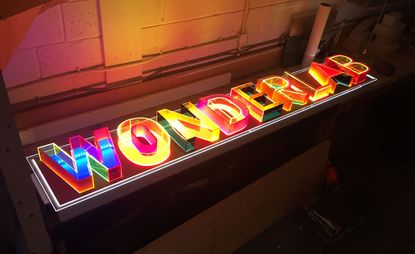
Bradford's newly renamed National Science and Media Museum has been going through a metamorphosis of late, sparked by the shedding of its previous title, the 'National Media Museum', earlier this year. The change came after the museum controversially lost its 400,000-strong Royal Photographic Society photography collection to the V&A, prompting it to make a dedicated move into the sciences.
The museum has embraced the shift in focus – as proven by its new £1.8m Wonderlab gallery. The dynamic space, aimed at children, explores the science of light and sound through state-of-the-art exhibits. Visitors will be able to see an array of mindbending, interactive treats, including live performances and world firsts.
Take Japanese artist Akinori Goto's 3D-printed zoetrope installation. When static, it is a mysterious hollow drum, but at the touch of a button, blades of light beam onto the spinning zoetrope to reveal human figures that multiply and dance (to the gleeful joy of children standing nearby).

An exhibit at Wonderlab, called 'Can you hear through your teeth?'
In total, 22 exhibits (including an anti-gravity mirror and a musical laser tunnel) compete for attention in the gallery. Designing a space to hold them all was no mean feat. The task was taken on by three British design firms – Michael Grubb Studio (which took care of lighting), Ab Rogers (3D design) and LucienneRoberts+ (2D design, gallery identity and art direction).
David Shaw of LucienneRoberts+ was the project lead. 'We all wanted the space to feel both exciting and sophisticated. It is dominated by dark, intense blues punctuated by small amounts of very bright colour,' he explains. The space emits a futuristic aura; it's a hive of genuine scientific activity, reflecting the museum's renewed focus on education and discovery.
Unlike a stuffy, clinical science lab, kids are encouraged to explore freely – nothing is behind Perspex or off-limits. 'It has to appeal to both children and their parents and carers,' Shaw says. 'We were determined not to talk down to children, and to be as inclusive as possible.' To achieve this, the typography is clean and unfussy while the illustrations – courtesy of Adam Boardman, whose work is inspired by graphic novels – depict visitors of all ages, races and abilities.
Apparently, three is not necessarily a crowd when it comes to design. The studios worked collaboratively to pull off the wide-ranging project. 'From the start we shared an idea of how the gallery should feel,' Shaw says. 'We talked about it as akin to visiting Piccadilly Circus for the first time — being excited by the mysterious streets and bright, colourful signs. There was a shared ambition and belief that we could achieve something fresh and special.'
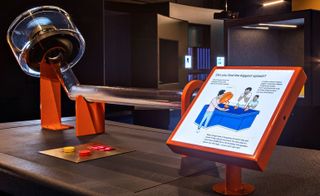
'Can you make the biggest splash?' encourages visitors to create volume and frequencies, in the form of sound waves, to disturb the water surface
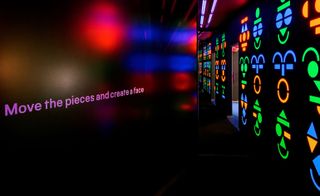
'Move the pieces and create a face' investigates the electromagnetic spectrum in the UV room

A view of 'Wonderlab' from the gallery's entrance, including 'Science on a Sphere' - a 6ft globe that offers viewers a closer look at the surface of the sun

'What colours are the parrots?' explores ultraviolet light, and why you can see its glowing effects but not the light itself, in the UV room
INFORMATION
For more information, visit the LucienneRoberts+ website, the Ab Rogers website, the Michael Grubb Studio website and the Wonderlab website
ADDRESS
National Science and Media Museum
Little Horton Lane
Wallpaper* Newsletter
Receive our daily digest of inspiration, escapism and design stories from around the world direct to your inbox
Bradford BD1 1NQ
Elly Parsons is the Digital Editor of Wallpaper*, where she oversees Wallpaper.com and its social platforms. She has been with the brand since 2015 in various roles, spending time as digital writer – specialising in art, technology and contemporary culture – and as deputy digital editor. She was shortlisted for a PPA Award in 2017, has written extensively for many publications, and has contributed to three books. She is a guest lecturer in digital journalism at Goldsmiths University, London, where she also holds a masters degree in creative writing. Now, her main areas of expertise include content strategy, audience engagement, and social media.
-
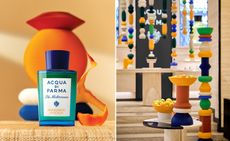 Discover Acqua di Parma’s new Mandarino di Sicilia fragrance at Milan Design Week 2024
Discover Acqua di Parma’s new Mandarino di Sicilia fragrance at Milan Design Week 2024Acqua di Parma and Fornice Objects bring the splendour of Sicilian mandarin fields to Milan to celebrate new fragrance Mandarino di Sicilia
By Simon Mills Published
-
 First look at Samba Room, London’s innovative cocktail lounge packed with Brazilian energy
First look at Samba Room, London’s innovative cocktail lounge packed with Brazilian energyLondon’s Samba Room, an extension of SushiSamba, is a dynamic bar, lounge and private dining space designed by Fabled Studio
By Tianna Williams Published
-
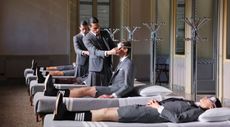 Thom Browne shows how to make the perfect bed with theatrical performance at Milan Design Week 2024
Thom Browne shows how to make the perfect bed with theatrical performance at Milan Design Week 2024American fashion designer Thom Browne makes his Milan Design Week debut with a new homeware collection created in collaboration with historic linen company Frette
By Scarlett Conlon Published
-
 Supergraphics pioneer Barbara Stauffacher Solomon: ‘Sure, make things big – anything is possible'
Supergraphics pioneer Barbara Stauffacher Solomon: ‘Sure, make things big – anything is possible'94-year-old graphic designer Barbara Stauffacher Solomon talks radical typography, motherhood, and her cool welcome for St Moritz
By Jessica Klingelfuss Published
-
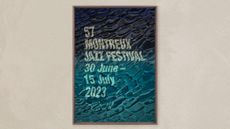 Montreux Jazz Festival posters: a visual history
Montreux Jazz Festival posters: a visual historyAs artist Guillaume Grando (SupaKitch) unveils his poster for the 57th Montreux Jazz Festival (30 June - 15 July 2023), we reflect on the most memorable designs since 1967, including from David Bowie to Andy Warhol and Camille Walala
By Harriet Lloyd-Smith Last updated
-
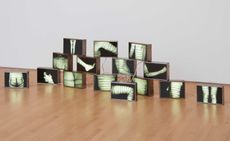 AA Bronson on the radical, enduring legacy of General Idea
AA Bronson on the radical, enduring legacy of General IdeaGeneral Idea, an art group that pioneered a queer aesthetic, is celebrated in a retrospective at the National Gallery of Canada (opened during Pride Month and running until 20 November 2022). Surviving member AA Bronson speaks about their origins, and impact on art and social justice
By Benoit Loiseau Last updated
-
 A Practice for Everyday Life gives 59th Venice Biennale a richly surreal graphic identity
A Practice for Everyday Life gives 59th Venice Biennale a richly surreal graphic identityLondon-based graphic design studio A Practice for Everyday Life (APFEL) gives an otherworldly identity to the surrealism-infused 59th Venice Biennale theme ‘The Milk of Dreams’
By Jonathan Bell Published
-
 Inside Na Kim's vibrant playground for all ages
Inside Na Kim's vibrant playground for all agesSouth Korean graphic designer Na Kim's ‘Bottomless Bag’, installed at Buk-Seoul Museum of Art, is a vivid, geometrical exploration of memory and everyday objects. We offer a virtual tour and find out how the concept came to be
By Andy St Louis Last updated
-
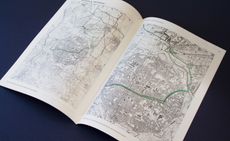 Philipp Doringer’s cartographic design: from Bob Dylan to Vienna’s Second District
Philipp Doringer’s cartographic design: from Bob Dylan to Vienna’s Second DistrictOur Next Generation 2022 showcase shines a light on 22 outstanding graduates from around the globe, in seven creative fields. Here, we present Austrian Philipp Doringer, a graduate of Design Academy Eindhoven
By Jonathan Bell Last updated
-
 Chiachi Chao’s typography blends Western and Eastern writing styles
Chiachi Chao’s typography blends Western and Eastern writing stylesOur Next Generation 2022 showcase shines a light on 22 outstanding graduates from around the globe, in seven creative fields. We profile Taiwanese type and graphic designer Chiachi Chao, a graduate of ECAL, Lausanne
By Jonathan Bell Last updated
-
Tom Hingston on designing for Serpentine Galleries, the V&A, and Wallpaper*
London-based art director and graphic designer Tom Hingston discusses his visual identities for Serpentine Galleries
By TF Chan Last updated
